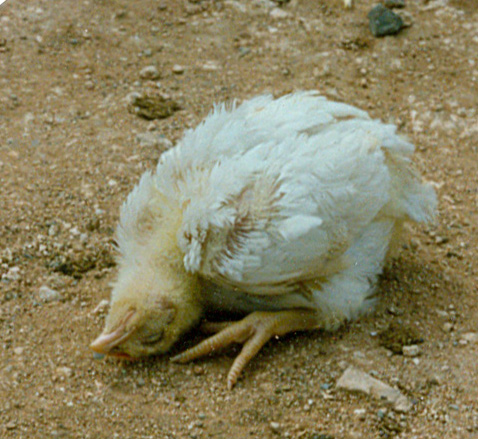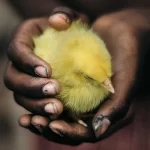Egg production in a healthy chicken should run on uninterrupted until it is time to sit on them. In other cases, the chicken may be unable to lay eggs at its time, may decrease production, or may produce faulty eggs. When any of these happens, it is time to investigate what is happening. It starts with checking the actual reasons for that. Some problems are temporary like skipping a day because she didn’t like the changing or taking away of some eggs, but others are due to illnesses.
- Newcastle diseases
This is a very contagious and infectious disease of poultry. In most cases, almost all birds affected die after a while if not treated. Nevertheless, this is a notifiable disease, which has an incubation period of 5 to 7 days. The disease affects poultry, especially at ages between 3 months to one year old.
It is caused by a virus. There is sudden death in the acute forms. Birds have difficulties in breathing, and they produce a harsh and grating rasping sound when breathing. The beaks remain wide open and necks are strained, birds lose appetite, and produce watery greenish diarrhea.
There is an obvious decrease in egg production or the eggs laid have soft shells.
Control and treatment -
There is no known treatment for the disease. In case of an attack, farmers are advised to kill all birds and burn them. Then they should clean and disinfect the houses before bringing in new stock. Vaccination should be done during the first six weeks and then two to three months later. Try also quarantining the affected birds to stop spreading.
2. Gumboro disease
This is also known as infectious Bursal disease. It was first recognized about 30 years ago in a village called Gumboro on the East Coast of America. It is caused by a virus known as the Birna virus. There is no evidence of a carrier state. The virus affects the B_ Lymphocytes which are found in the bursa of Fabricius (the glands above the vent of birds). It also affects the thymus, the spleen, and caecal tonsils.
The incubation period is thought to be 2 to 3 days. In terms of symptoms, the gland above the vent becomes swollen, there is a decrease in egg production, and birds develop respiratory distress. There is also a loss of appetite and affected birds show low water intake.
There is severe immune- suppression, making the birds more susceptible to other diseases.
Control and treatment -
Vaccinate the birds not showing the signs of infection with attenuated vaccines e.g. PGB98. You can also use Vitamins especially B12 for the fast manufacture of blood.
3: Infectious bronchitis
It is an acute, highly contagious viral disease of chickens. It affects chickens of 3 months to 1 year.
This is a respiratory disease characterized by gasping and sneezing cough, and nasal discharge. There will also be a decrease in egg production with a change in egg quality. The laid eggs have soft shells.
Control and treatment -
The birds should be vaccinated using a modified live virus vaccine.
4. Mycotoxicosis and Mycoticeffections
It is a disease caused by a toxic fungal metabolite. Poultry Mycotoxicosis is usually caused by fungi that colonized and invade grains and foods. The disease symptoms include a decrease in egg production. It also affects the quality of eggs and causes shell-less eggs.
Control and treatment -
Adding suitable antimyxotoxine in feeds and water can help control and eliminate the disease.
5: Egg drop syndrome (EDs76)
It is a viral disease of layer birds found mainly during peak production ages of 25 to26 weeks. It is transmitted through contaminated water. Symptoms include a decrease in the quality and quantity of eggs during peak production. The hens lay small-sized eggs with mushy eggshells which can be easily broken.
Control and treatment -
Vaccination of layers before laying.


